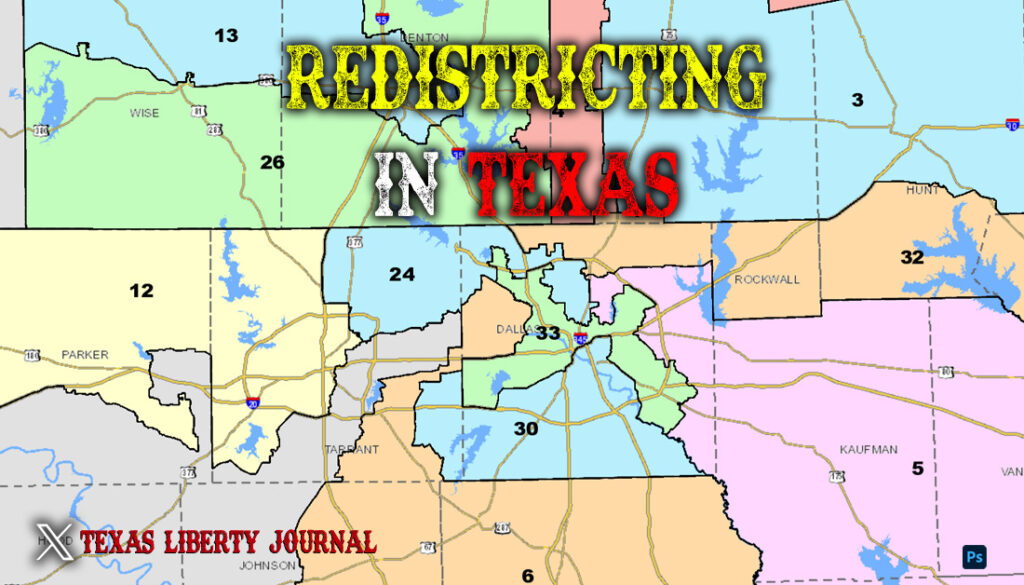AUSTIN — On Wednesday, Texas House Republicans, under the steady hand of Rep. Todd Hunter (R-Corpus Christi), unveiled a bold new congressional map, a mid-decade redistricting plan that promises to align Texas’ representation in Washington with the state’s deep conservative heartbeat.
Far from a mere political maneuver, this draft—poised for refinement before final approval by the Texas Legislature and Gov. Greg Abbott—offers a visionary blueprint to strengthen Texas’ influence in Congress, ensuring the state’s values resonate in the 2022 midterms and beyond. For constitutional conservatives, this map is a cause for optimism, a chance to solidify the Lone Star State’s role as a bastion of principled governance.
The plan is elegantly simple: it amplifies Texas’ conservative mandate by increasing the number of districts carried by former President Donald Trump in 2024—already an impressive 27 out of 38—to a robust 30, each secured by at least 10 points. Republicans, who currently hold 25 seats, stand to gain up to five more, reflecting the state’s electoral reality as demonstrated by Trump’s commanding performance.
By strategically concentrating Democratic voters into urban strongholds like those of Reps. Joaquin Castro, Sylvia Garcia, and Jasmine Crockett, the map ensures these areas retain their voice while freeing up other districts to reflect the conservative leanings of Texas’ sprawling suburbs and rural heartlands. This approach not only protects GOP stalwarts like Reps. Beth Van Duyne and Troy Nehls but also creates winnable seats that could elevate new conservative champions.
In South Texas, the map thoughtfully adjusts majority-Hispanic districts held by Reps. Henry Cuellar (D-Laredo) and Vicente Gonzalez (D-McAllen), nudging Trump’s 2024 vote share from 53% to about 55% in Cuellar’s district and 52% to roughly 55% in Gonzalez’s. These changes empower Hispanic voters, who increasingly lean Republican, to elect representatives who align with their values on economic opportunity and border security.
In Dallas, Rep. Julie Johnson’s district is reconfigured to better reflect the region’s conservative undercurrents, while Rep. Marc Veasey’s Fort Worth-based seat remains safely Democratic but encourages healthy competition.
Austin’s Reps. Greg Casar and Lloyd Doggett may face a consolidated blue district or a new Central Texas seat, offering voters a clearer choice between progressive and conservative visions.
In Houston, Rep. Al Green’s 9th District shifts to a competitive Trump +15 lean in eastern Houston, opening the door for fresh leadership in a dynamic region.
Demographically, the map is a masterstroke of inclusivity and balance. It increases majority-white eligible voter districts from 22 to 24, reflecting Texas’ diverse conservative base, while boosting majority-Hispanic districts from 7 to 8, four of which are among the targeted flips. The creation of two majority-Black districts—Houston’s 18th (now Harris +76) and Jasmine Crockett’s Dallas seat—ensures robust representation for Black Texans, addressing long-standing calls for equity. These adjustments demonstrate a commitment to fair representation while aligning with the state’s conservative ethos, as evidenced by the growing number of minority voters supporting GOP candidates.
Critics, including Democrats threatening to flee the state to disrupt the process, may decry the map as partisan. But Texas’ history of redistricting battles—dating back to the 1960s and currently under review in El Paso federal court—shows that change is never without contention. The Department of Justice’s concerns about four majority-minority districts, including the 18th, are noted, but the map’s careful calibration suggests a good-faith effort to balance legal requirements with voter intent. By aligning districts more closely with Texas’ conservative majority, the map sidesteps the pitfalls of past plans, offering a defensible framework that could withstand judicial scrutiny.
For constitutional conservatives, this redistricting is a triumph of principle and pragmatism. It respects the will of Texas voters, who have consistently chosen Republican leadership, while safeguarding the state’s ability to counter federal overreach. By protecting incumbents like Van Duyne and Nehls and creating opportunities for new conservative voices, the map ensures Texas remains a firewall against policies that erode individual liberty and economic freedom. The strategic consolidation of Democratic voters respects their right to representation while preventing the dilution of conservative votes across suburban and rural districts—a fair reflection of Texas’ geographic and ideological realities.
As the Texas Legislature refines Hunter’s draft, the opportunity is clear: this map can cement Texas’ role as a conservative powerhouse in Congress, amplifying the state’s influence on national debates over taxes, borders, and constitutional fidelity. Far from a power grab, this redistricting is a clarion call to represent the will of Texans—rural, urban, Hispanic, Black, and white—who yearn for a government that reflects their values. In the Lone Star State, where independence runs deep, this map is a step toward a future where Texas’ voice roars louder than ever.
